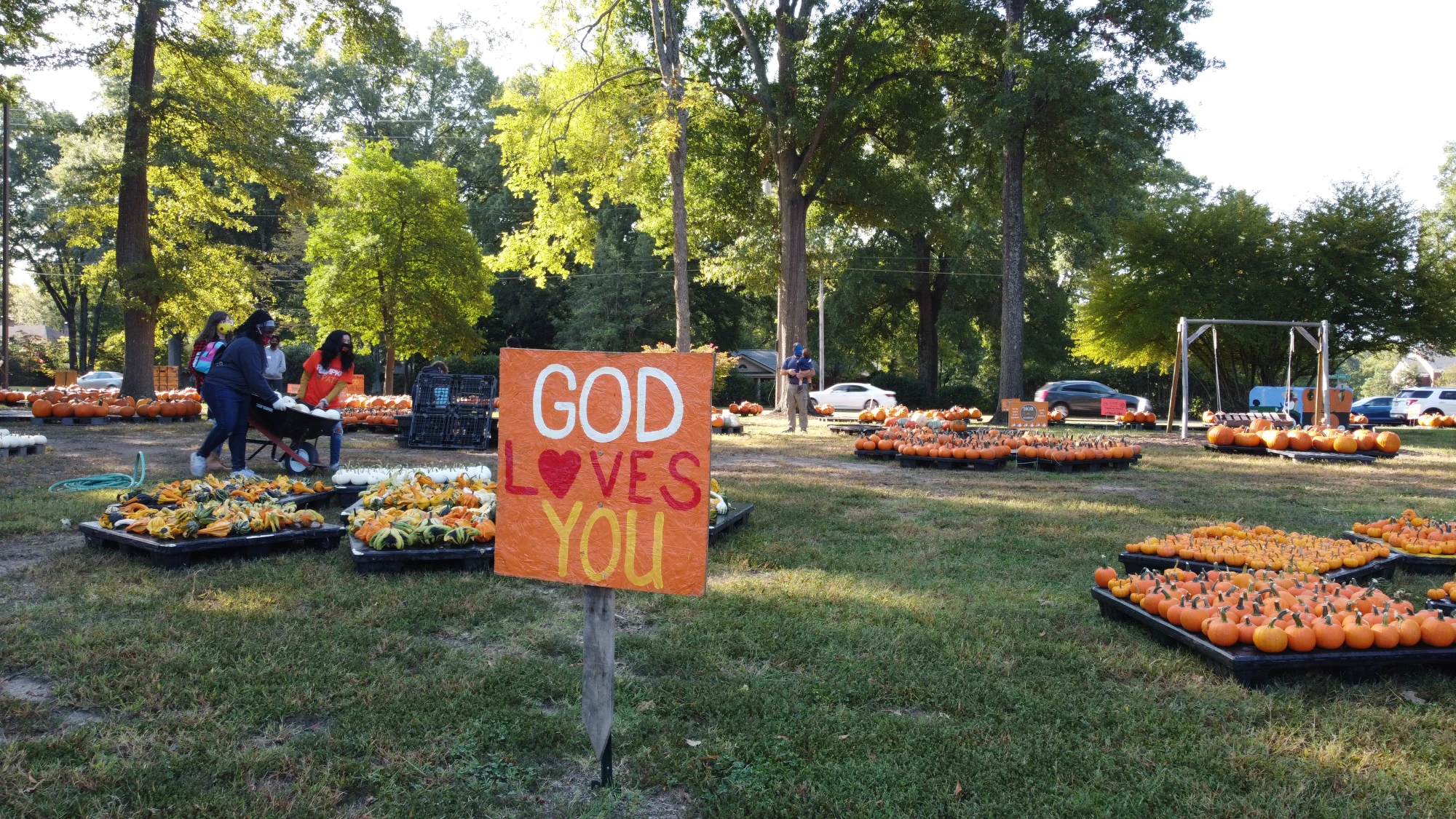The Pumpkin Patch Transformation
The Pumpkin Patch Transformation
By Bo Prosser
The original plan was for the church to buy a few pumpkins in the fall and sell them to raise money for the youth summer mission trip.
Eighteen years later, this event has turned into a significant ministry for Second Baptist Church of Memphis, Tennessee, and the surrounding community. Today, more than a hundred volunteers of all ages from the church, a nearby high school’s social clubs and athletic teams, a women’s recovery program, and a local bakery are in the mix.
“We are proud that the Second Baptist Pumpkin Patch has become a fall tradition in East Memphis,” says pastor Stephen Cook. “Our front yard is now a place of ministry to our community—a place of hospitality, ministry, kindness, fun, and play. The Pumpkin Patch has become a gathering place for all kinds of people representing all areas of the community coming together under the umbrella of Christian hospitality.”
Things began to shift about ten years ago. On retreat, church leaders began to think about programs that needed to become “more ministry focused and less event/budget driven.”
“Our retreat leader pushed us to reexamine our thoughts about everything, especially the Pumpkin Patch,” says Cook.
One church leader asked, “You mean we should make selling pumpkins a ministry?”
And then transformation was at hand.
The church began to build partnerships, ask customers how they could pray for them, and engage community groups. Exclaims Pastor Cook, “When we thought in terms of ministry and partnership, the momentum began to build. We slowly grew from selling a few hundred pumpkins to selling over forty tons of pumpkins this past fall!”
Second Baptist is not a megachurch. The congregation has about two hundred faithful congregants. The secret to the church’s success was in reimagining the annual fundraiser.
The church quit talking about sales and started focusing on ministry. Mindsets began to shift. Partners began to inquire. Relationships began to form.
Thistle & Bee, a nonprofit organization serving women recovering from prostitution, abuse, and trafficking, helps with the annual event and sells their bee-related products of honey granola and candles. The offices and operations for this group are housed at Second Baptist facilities. The women have an opportunity to work for eighteen months in this social, emotional, and healing enterprise. The church kitchen, once used for preparing Wednesday night suppers for the church members, is now used by survivors of abuse and the sex industry.
Sweet Lala’s Bakery, a local business giving “second chances” to young people, is also a partner in the Patch. This family-owned business places a heavy emphasis on ministry to at-risk young people who deserve a second chance. Many of their staff are adolescents and young adults who are learning to turn their lives around for good.
Proceeds from the Pumpkin Patch support missions and ministries for children and youth. Pumpkin sales have supported student mission trips to Helena, Arkansas, the Rio Grande Valley in Texas, New York City, Atlanta, and South Africa. The sales have also purchased literacy materials, school supplies, and Christmas presents for children. They have also funded local spring break mission projects for Memphis teens, empowering them to use creativity to make their neighborhoods safer and more beautiful. Proceeds from the last two sales have even helped create an outdoor learning space for a local high school that partnered with the church during the pandemic.
Daniel Johnson, associate pastor and project leader for the Pumpkin Patch, shares, “One day I had a chance to look around at everyone attending. I thought it was an awesome depiction of the kingdom of God—everyone coming together in a time when so many need hope. I’m hoping it will continue to be this way.”
“The transformation was slow, hard work, but the Pumpkin Patch has become our congregation’s signature community ministry,” says Pastor Cook.
Some information for this article was provided by the communications department of the Cooperative Baptist Fellowship.
This story is part of Lake Institute’s story collection, the Faithful Generosity Story Shelf, which highlights congregations and other religious organizations who have sought to use their assets and resources in creative—and sometimes surprising—ways as an expression of faithful giving.
Each entry in our Story Shelf is short enough to be read and discussed during a committee meeting or other group gathering. Our hope is that these accessible vignettes will spark new questions, conversation, and imagination among clergy and laity about what might be possible with the funds, buildings, land, and other resources in their care. If you know a story that should be included in the Story Shelf, suggest it here.
Subscribe
Insights is a bi-weekly e-newsletter for the religious community and fundraisers of faith-based organizations that provides:
- Reflections on important developments in the field of faith and giving
- Recommended books, studies and articles
- Upcoming Lake Institute events

